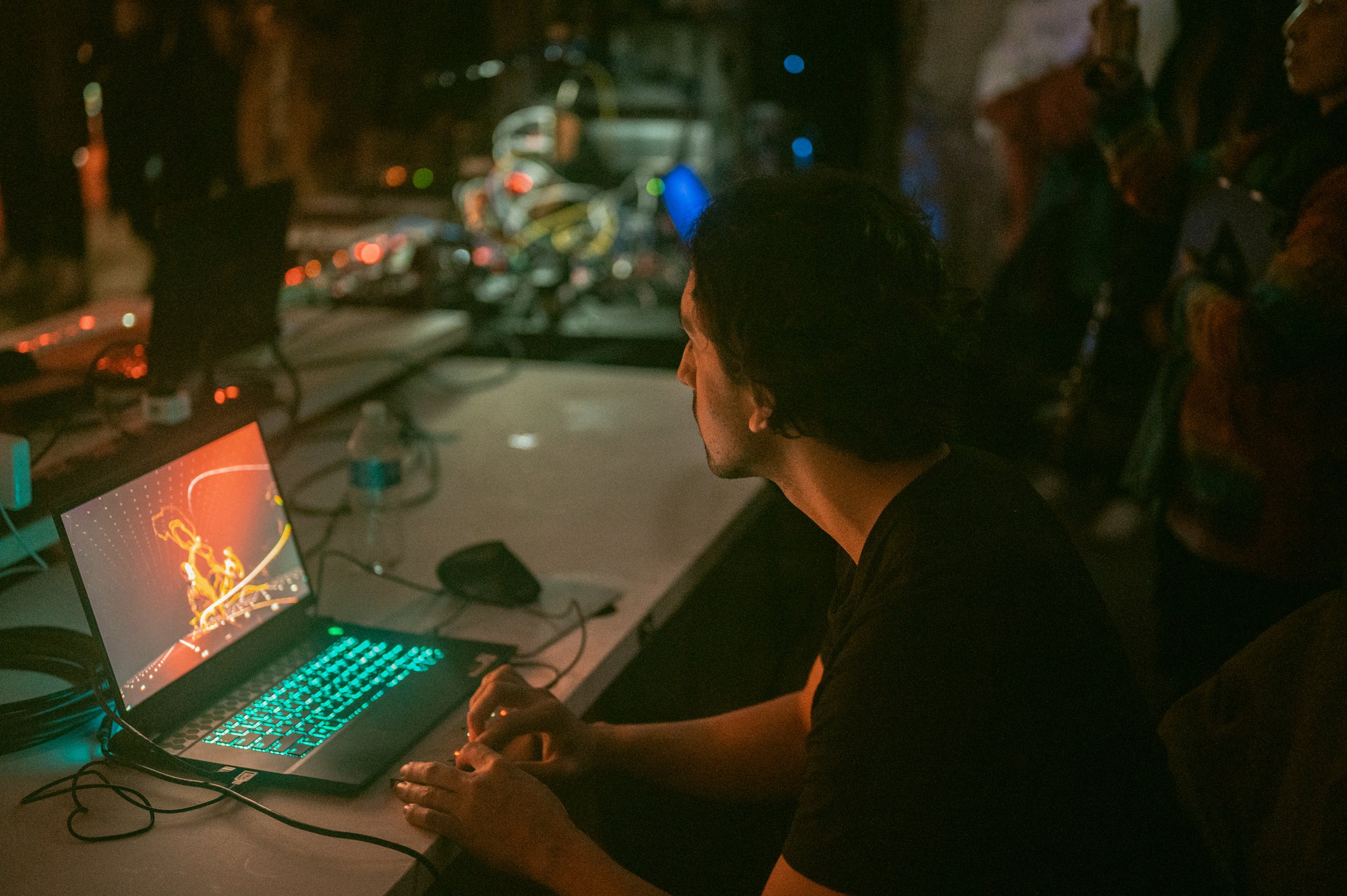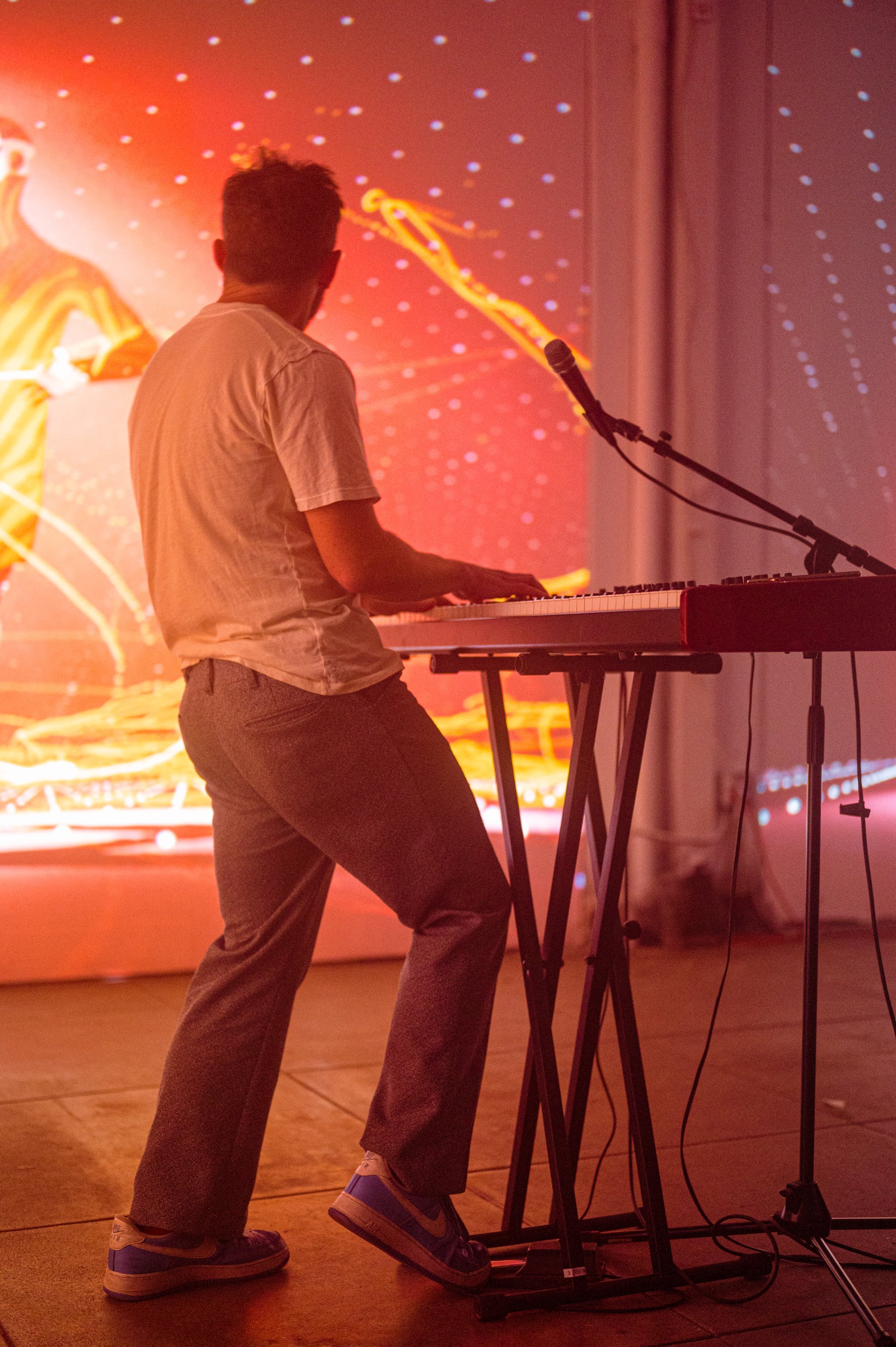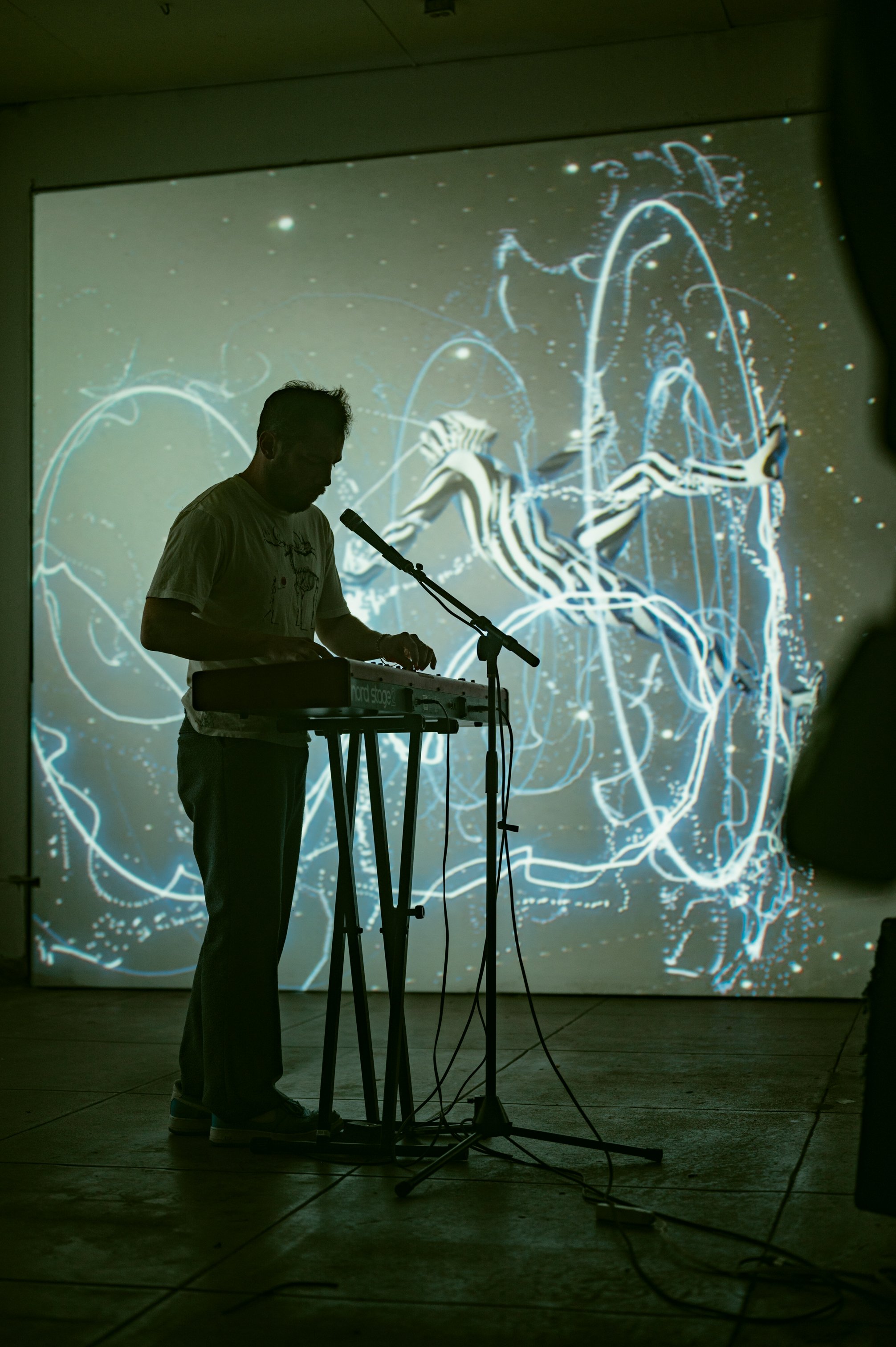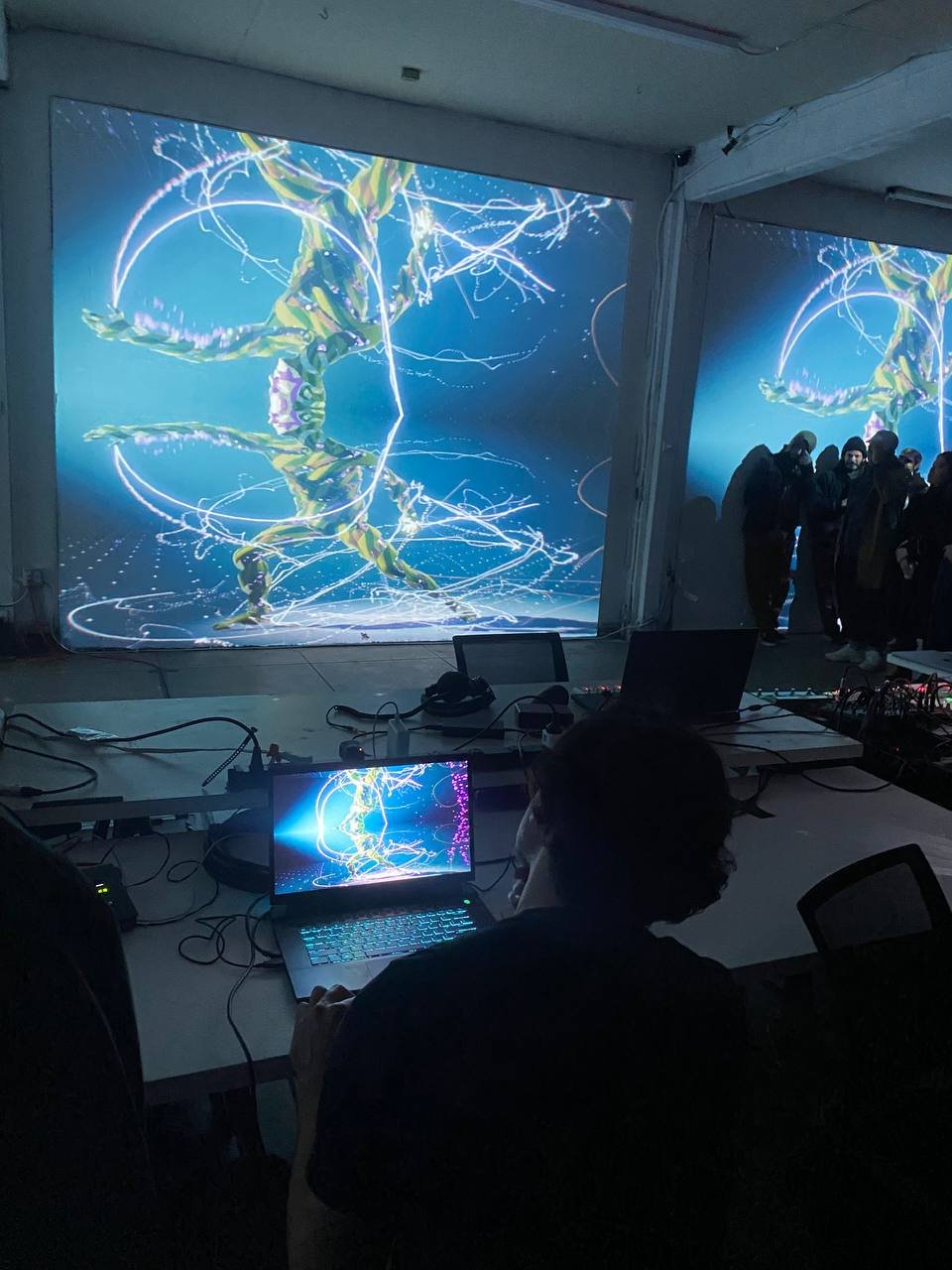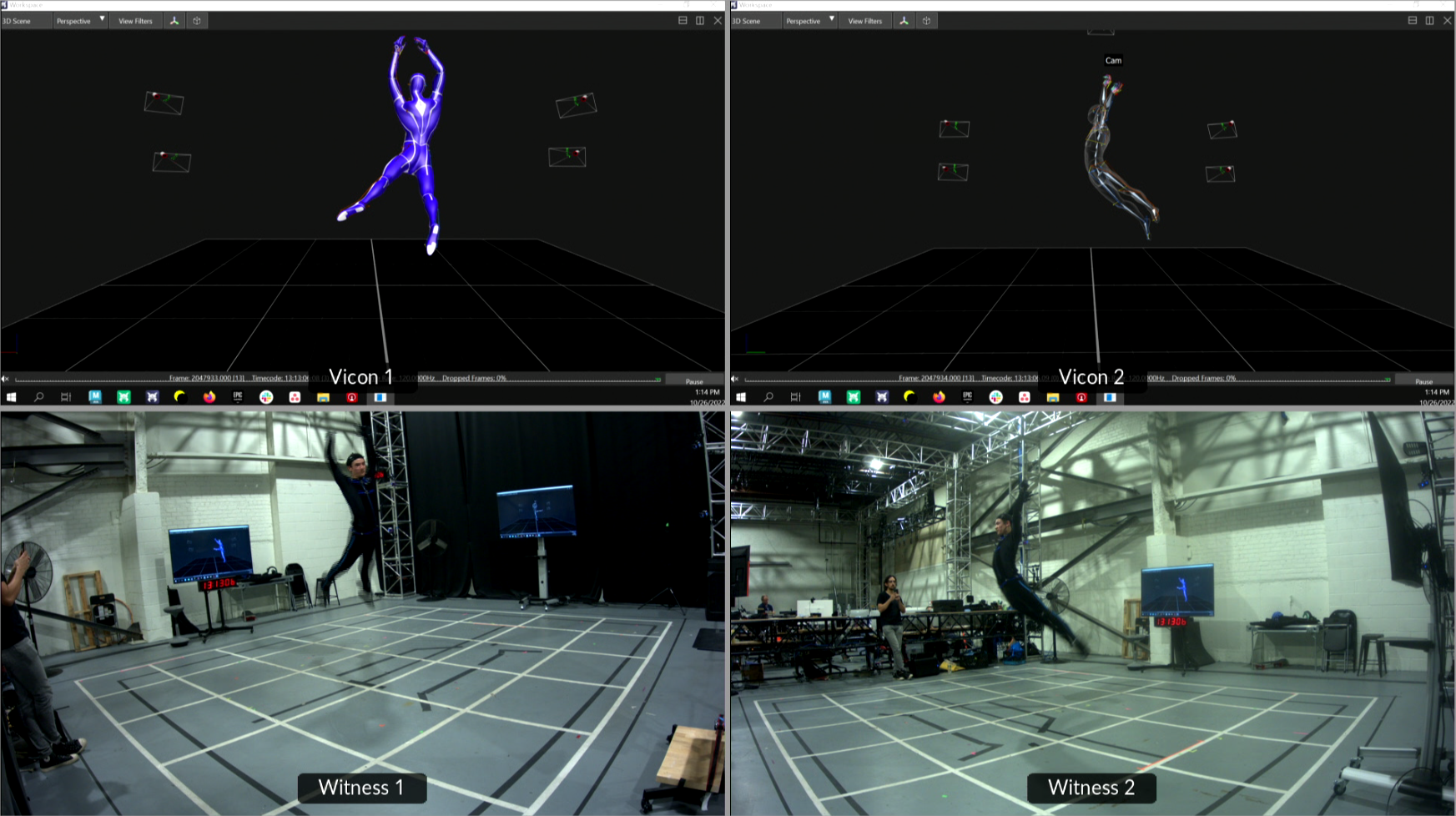About
Using some of the art and systems I had been building in Unreal engine for my Pathways project, I quickly put together in 3 days a production version that I used to perform a 30 minute audio-visual set for a crowd of about 50 or so people.
Leaving heavily on Blueprints, Niagara, custom materials, and MIDI as input, I designed a world where a lone automaton-like avatar materializes in and out of existence as it moves through various dance sequences, leaving behind emissive trails of light.
For animation, I built a system for creating snippets of animation from a larger sequence, and allowing the ability to re-time those sequences to play back at non linear rates and assign these different snippets to MIDI inputs for live triggering.
All of the dance animation came from a mocap session I did at Zerospace last year with a dancer/choreograher friend, Cameron Surh. I gave Cameron the prompt to explore interesting ways of moving across a space in a line, and divided these movement explorations into different categories including things like ground work, leaps and top work. We leaned on a mixture of contemporary and ballet dance styles.
Live music by: Lyell
Dance by: Cameron Surh
Motion capture tech: Zerospace
Photography: Miguel Gonzalez
Part of my investigation into this work involved making a GPU enabled skeletal mesh cloner system that could respond to live mocap data. I ended up open sourcing this implementation on github if you want to read more on it or use it: https://github.com/dbsierra/NiagaraGPU-SkeletalMeshEcho?tab=readme-ov-file
Live running history of skeletal mesh animation using Niagara and Blueprints only
The VAT textures that get generated by Niagara and used by the static mesh particles
